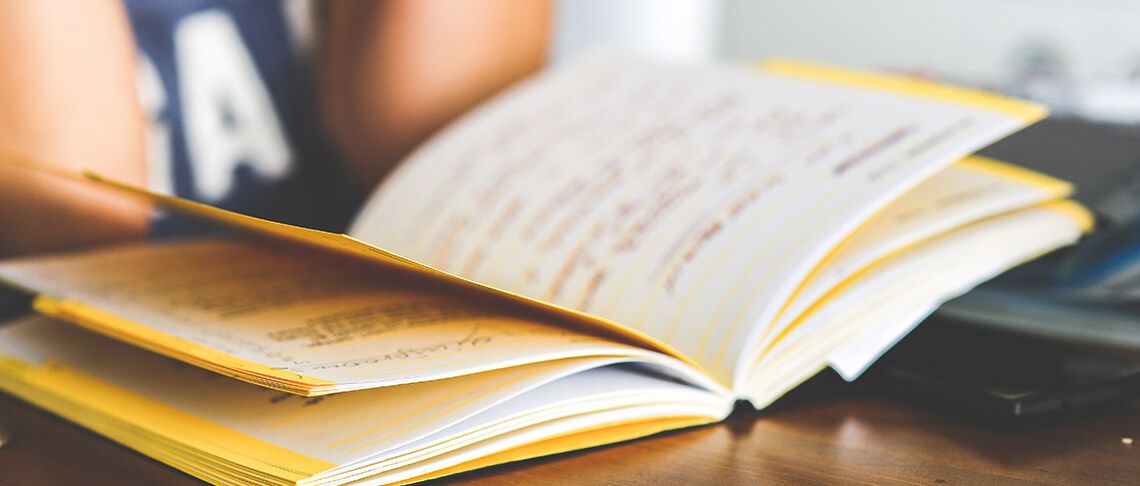A new way of learning
Many people are put off by the term “memory training” because it immediately reminds them of their school days. Learning Schiller’s “The Robbers” by heart, cramming all the irregular verbs in English, or memorizing the periodic table of elements was almost a traumatic experience for many, leaving more serious (and negative) marks on their memory than the actual learning material, which they have probably long since forgotten. Added to this are the often anxiety-ridden exam situations, in which it sometimes becomes clear that mindless cramming was actually a complete waste of time. After such childhood and teenage experiences at school, many are unwilling to train their memory for this almost torturous learning! But now comes the good news! There is a completely different way of learning. A way that is fun! A truly promising strategy in which information is simply stored more easily and better in the brain and is therefore quickly accessible.
With these memorization techniques, some of which are new but others of which are very old, learning becomes far more effective, enjoyable, and even fun than with traditional "cramming and cramming." As a positive side effect, you'll notice that the learning techniques I'll present in this blog not only improve our memory performance. Many other mental (cognitive) skills will also improve, which we train automatically and incidentally, directly or indirectly, through the use of the memorization techniques I've described.
In the following, I would like to explain these 7 mental factors in more detail, which also form the basis of the millennia-old mnemonic technique (derived from the Greek goddess Mnemosyne, mnemonics means “art of memory”).
transformation
Transformation (Latin for conversion) is intended to help us "convert" difficult-to-digest information into delicious learning morsels. Very often, when learning, we are dealing with completely abstract information, such as numbers or complicated vocabulary. Presumably due to the way our memory processes, it is difficult for everyone to memorize such abstract, i.e., less vivid information. In this case, one should ideally perform a transformation before or during the actual learning. This means converting the theoretical and dry learning material into something more vivid and, if possible, even image-based, and then storing it that way. Example: If you manage to better remember the atomic number 92 of the chemical element uranium by imagining that a dear great-grandfather (e.g., grandfather) actually died at the age of 92, then you have perfectly transformed the abstract number into an emotionally charged (and easier to remember) age.
association
This term (Latin for "connect") refers to our mental ability to make connections between information. You've probably used this mental factor frequently in learning, as it's widely known and accepted that this process of association makes learning material easier to absorb, more easily memorize, and retain for longer. At the same time, it also promotes intelligence, as it's sometimes not at all obvious at first glance how to mentally connect two concepts or pieces of learning data that seemingly have nothing to do with each other. However, through intelligent and differentiated thinking, you'll find an association that's helpful for memorization faster and easier. Even if it may not always succeed, forming associations is possible in most learning cases. I would also like to point out that two areas must be distinguished in associative learning: On the one hand, you can form associations between the newly acquired learning units and thus achieve faster memorization of the resulting knowledge complex – the learning package thus becomes, in a sense, larger and more distinctive; or you create an association between the material to be learned and material already stored in long-term memory (this type of association formation is used more frequently). Incidentally, the latter explains why it's easier to learn the more you already know and have stored in long-term memory – a lot of stored knowledge leads to many possible associations! Example: If you recognize the PIN code 8161 as the year the Thirty Years' War began, then this is a truly successful association!
fantasy
Many schools, universities, and continuing education institutes indulge in the vice of trying to reduce learning material to its essentials. This may be well-intentioned, but this so-called reductive approach robs us of the immense creativity and imagination of the human mind. The so-called elaborative approach is better – at least for long-term retention. This approach involves adding further content to the information being learned, which should, if possible, encompass all the senses. Incorporating imaginative information is immensely helpful for easy and long-term retention. It's almost like giving a gift: Sometimes, it's the beautiful packaging that truly enhances the present inside.
As I explain, you too will learn how imaginative learning will lead to a "fantas"tic memory. For example, if you memorize "snigger" (the English word for "giggle") by imagining a boy giggling while popping a Snickers bar into his mouth, you'll retain this new vocabulary much better.
emotion
At first glance, this factor requires little explanation. Everyone knows that information or events are remembered for a long time—sometimes (unfortunately) a lifetime—if they have triggered strong emotional feelings. Brain researchers have recently found increasing evidence that emotions play a central role in memory. One could almost say that emotions act as the perfect glue for information. We can utilize this fact in learning by consciously trying to integrate emotional images into the material we are learning. In doing so, we can utilize the entire range of emotions that nature has provided us with: such as humor, anger, rage, passion, horror, eroticism, relaxation, and fear. If you find it easy to memorize the term "arid dry zone" for a presentation when you think of the terrible thirst in the desert or Death Valley, you have perfectly implemented the emotion principle.
logic
The best way to retain learning material is certainly to develop a logical understanding of the subject matter. Unfortunately, this isn't always possible. For a variety of reasons: Either it would be too time-consuming to understand the deeper connections; or—more often—the learning material lacks any logic at all, such as vocabulary, numerical data, or names. However, if we have already prepared the learning material in the right way using the factors described above, we are almost always able to use our logic and powers of deduction to retain it even more intensively.
For example, a digital sequence of numbers like 101001000100001000100101 is easier to memorize if you recognize the ascending and descending sequence of zeros! The important thing is that you always try to actually find such logic—even if it's "artificial logic." By this, I mean that the things you put into logical relationships don't have to have anything to do with each other, technically or thematically. I coined the term "pseudological" for this great memorization technique.
localization
This mental step when learning new material is probably the least known of all 7 factors for you, yet it is the oldest methodical way to store knowledge in such a way that it can be recalled from memory not only seamlessly but also in a fixed order. To do this, we carry out what is known as "localization" of the learning material, i.e., we anchor it in a very specific place or location (Latin: locus = place, location, spot) in a well-known environment (we will learn how this works in practice later). We can then specifically find, retrieve, and reproduce these loci in a "mental walk" when we want to recall the knowledge. This incredibly well-functioning and very important method will be explained in more detail later. But it will probably already be understandable if you consider what you would do if, for example, you had misplaced your wallet in your house or apartment and have put the hectic and immensely annoying phase of aimless searching around behind you. Then you might mentally walk through the rooms and places you were recently when you still had your wallet, and you'll often be able to mentally determine whether you left it there. Usually, that liberating flash of inspiration will come to you! – just by mentally walking through places.
Visualization
This phenomenal human ability to create images or concepts in the mind that we don't currently perceive through our senses in the real world is not only the final step (after using my heptagram), but perhaps also the most important step in achieving incredible memory performance (for others and sometimes for yourself). With the support of the mental factors listed above, you can visualize (almost) all learning content as clearly as possible in your mind as a "mental image" and have it stored in this form by your memory. Why is this important? Well, because each of us has an immense capacity to store pictorial, visual, and sensory-integrating information. You may have already noticed that telephone numbers are often easier to remember if you memorize the pattern while typing them on the keypad—a very useful example of visualization (and sometimes also of motor/haptic storage)!
These astonishing visual memory capacities of our brain were demonstrated back in 1973 by Prof. L. Standing (Canada) in an experiment that has since become a classic: The test subjects (students) were presented with a clear and meaningful image every five seconds – a total of 1,000. The professor then wanted to know how many of these images the students had managed to memorize. And how did the memory test work? Well, in the second part of the experiment, they were shown two images at a time, one of which was unknown to the students, and the other had already been shown in the first part of the experiment. The result was simply astonishing: On average, the student subjects remembered 992 of the 1,000 images!!! But of course, there was still a question: Was the students' learning performance simply exceptionally good in general, or did the astonishing memory results actually have something to do with the images? So they conducted the same experiment in the same way, only replacing the images with words! The result was clear: The recall rate was a measly 70%! Specifically, this means that the students made 300 errors with the words during the experiment, compared to 8 errors with the pictures!
This is precisely the reason why you should absolutely use your powers of visualization whenever you learn. Furthermore, the "mental image" that forms in your head, which essentially represents the more or less abstract learning material, should not only be visual/optical in nature. You should also – whenever possible – incorporate all sensory modalities into your "mental image," including sounds, touch, or smells. Einstein is said to have once said: "The ability to visualize is more important than knowledge." This is already a clear statement from one of the greatest physicists of all time and underpins the memory and learning techniques I present here. However, I would like to make the following expanded statement, based on his famous saying: "The ability to visualize can create immense knowledge."
This text is based on Dr. Karsten's first book, "Success Memory" (and his bestselling textbook, "Learning Like a World Champion"). Both books are published by Goldmann Verlag.
{{widget type="egproducts/list_featured" template="elegento/products/listslider.phtml"}}

















